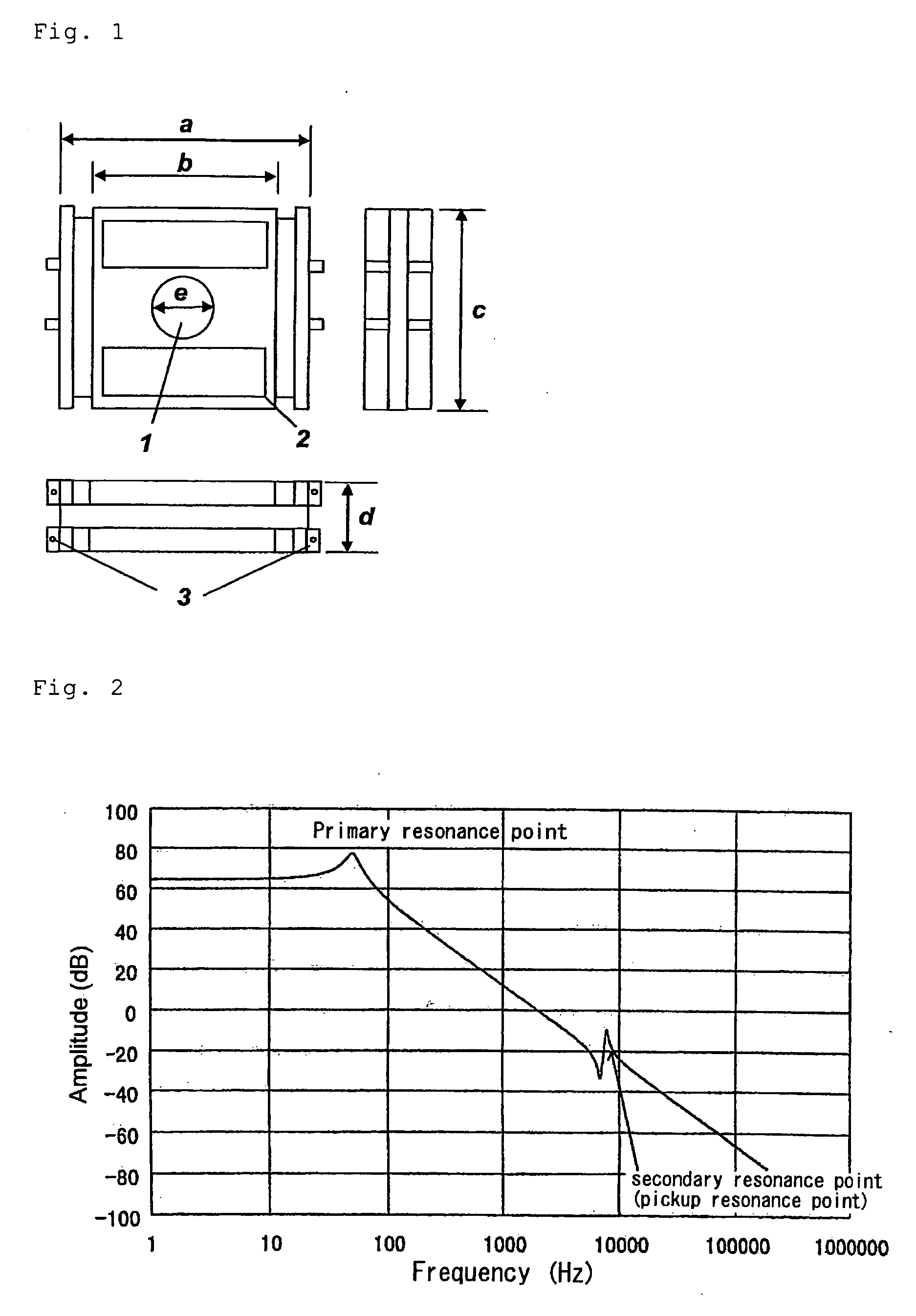Resin-molded component for signal reader and method for molding thereof
a signal reader and resin-molded technology, applied in the field of resin-molded components for signal readers, can solve the problems of reading errors, the requirement for improving the vibration damping property and increasing the resonance frequency in the signal reader has become severer than ever, and the conventional thermoplastic resin materials for existing signal readers cannot achieve stable reading performance. stable, light weight
- Summary
- Abstract
- Description
- Claims
- Application Information
AI Technical Summary
Benefits of technology
Problems solved by technology
Method used
Image
Examples
production example 1
Production of Liquid Crystalline Polymer (A1)
[0063] To a polymerization reactor equipped with a nagitator, a reflux column, a monomer charge opening, a nitrogen introduction opening, and evacuation / discharge lines, there were charged 5 g (2% by mole) of 4-hydroxybenzoic acid, 166 g (48% by mole) of 2-hydroxy-6-naphthoic acid, 76 g (25% by mole) of terephthalic acid, 86 g (25% by mole) of 4,4′-dihydroxybiphenyl, 22.5 mg of potassium acetate, and 193 g of acetic anhydride. The reaction system was heated to 140° C., to conduct the reaction at 140° C. for 1 hour. After that, the reaction system was further heated to 360° C. during 5.5 hours, which was then evacuated to 5 Torr (667 Pa) during 30 minutes, thereby conducting melt polycondensation while distilling out acetic acid as the byproduct, excess acetic acid anhydride, and other low boiling components. When the agitation torque reached a specific value, nitrogen gas was introduced to the reaction system to bring the atmosphere from...
production example 2
Production of Liquid Crystalline Polymer (A2)
[0064] The same procedure with that in Production Example 1 was applied except the charge of 226 g (73% by mole) of 4-hydroxybenzoic acid, 114 g (27% by mole) of 2-hydroxy-6-naphthoic acid, 22.5 mg of potassium acetate, and 236 g of acetic anhydride, thus obtained the polymer (A2) (1.39 of specific gravity).
production example 3
Production of Liquid Crystalline Polymer (A3)
[0065] The same procedure with that in Production Example 1 was applied except the charge of 266 g (60% by mole) of 2-hydroxy-6-naphthoic acid, 66 g (20% by mole) of terephthalic acid, 60 g (20% by mole) of 4-acetoxy aminophenol, 22.5 mg of potassium acetate, and 168 g of acetic anhydride, thus obtained the polymer (A3) (1.39 of specific gravity).
PUM
| Property | Measurement | Unit |
|---|---|---|
| Percent by mass | aaaaa | aaaaa |
| Percent by mass | aaaaa | aaaaa |
| Pressure | aaaaa | aaaaa |
Abstract
Description
Claims
Application Information
 Login to View More
Login to View More - R&D
- Intellectual Property
- Life Sciences
- Materials
- Tech Scout
- Unparalleled Data Quality
- Higher Quality Content
- 60% Fewer Hallucinations
Browse by: Latest US Patents, China's latest patents, Technical Efficacy Thesaurus, Application Domain, Technology Topic, Popular Technical Reports.
© 2025 PatSnap. All rights reserved.Legal|Privacy policy|Modern Slavery Act Transparency Statement|Sitemap|About US| Contact US: help@patsnap.com


